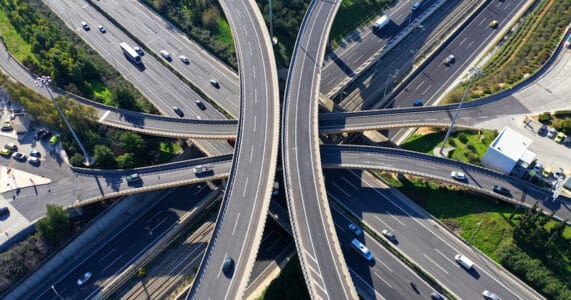
How the infrastructure bill can begin funding state and local projects
Watch for clean energy and grid-related investments and incentives for public-private partnerships (P3s)
President Joe Biden signed a slimmed down, bipartisan version of the infrastructure bill on November 14, 2021.
What remains in this iteration will have some direct benefits for state and local entities, according to Brian Oakley, Executive Vice President, Public Infrastructure, JLL. The Infrastructure Investment and Jobs Act includes $7.5 billion in grants for governments to consider public-private partnerships for electric vehicle charging stations, among many other investments.
“We’ve seen an influx of cities reaching out for guidance to implement changes across their real estate portfolios,” Oakley says. “The bill includes provisions for local governments to hire experts in areas like charging stations, solar energy and renewable energy. Recognizing the need for charging stations is a great first step. That kind of deployment is a major infrastructure challenge.”
Climate Change, Airports, And Public Transit
There are significant dollars to be invested in hard infrastructure like roads, bridges, and tunnels.
But the $1.2 trillion bipartisan measure doesn’t stop there. It includes:
- US$47 billion in climate resilience measures to protect buildings from the storms and fires that result from climate change
- $65 billion to repair and protect the electric grid, build new transmission lines for renewable power and develop nuclear energy and “green hydrogen” and carbon capture technologies
- $39 billion to continue and expand current public transit programs, including help that allows cities and states to buy zero- or low-emission buses
- $66 billion to fix Amtrak and build out its service along the Northwest Corridor, in addition to building tens of millions for high-speed rail and other commuter rail
- $7.5 billion to build electric vehicle charging stations;
- $25 billion to repair airports to reduce congestion and emissions, encouraging the use of low-carbon flight technology
Where once they may have lagged in their efforts to deploy capital into the infrastructure that levels the playing field with other cities and states and even private businesses, state and local governments can realize immediate benefit from many portions of this legislation, according to Ryan Severino, Chief Economist, JLL.
“Tapping into these funds and adding some of their own prevents enormous costs in the future,” Severino says. “It’s like a car with the check engine light on. The longer you put off making repairs, the more expensive it will be down the line.”
This article originally appeared in JLL’s Trends & Insights.














![[VIDEO] Get More for Your Business in Ardmore. Oklahoma](https://businessfacilities.com/wp-content/uploads/2024/02/maxresdefault-324x160.jpg)
